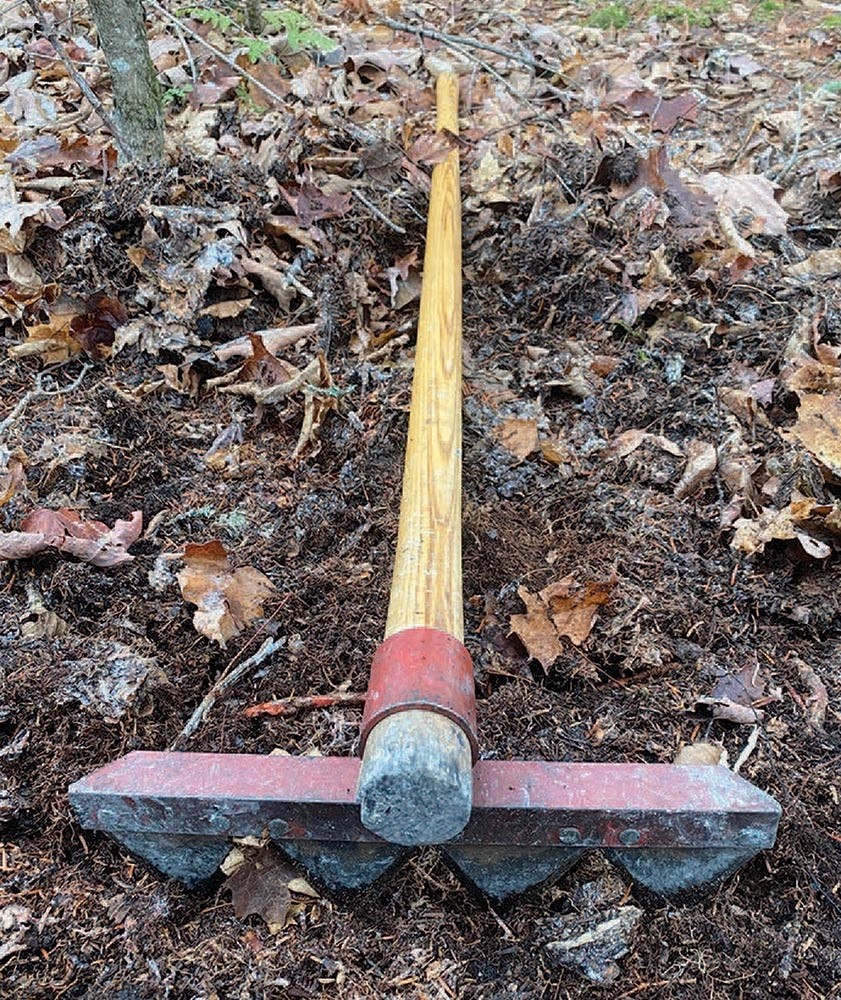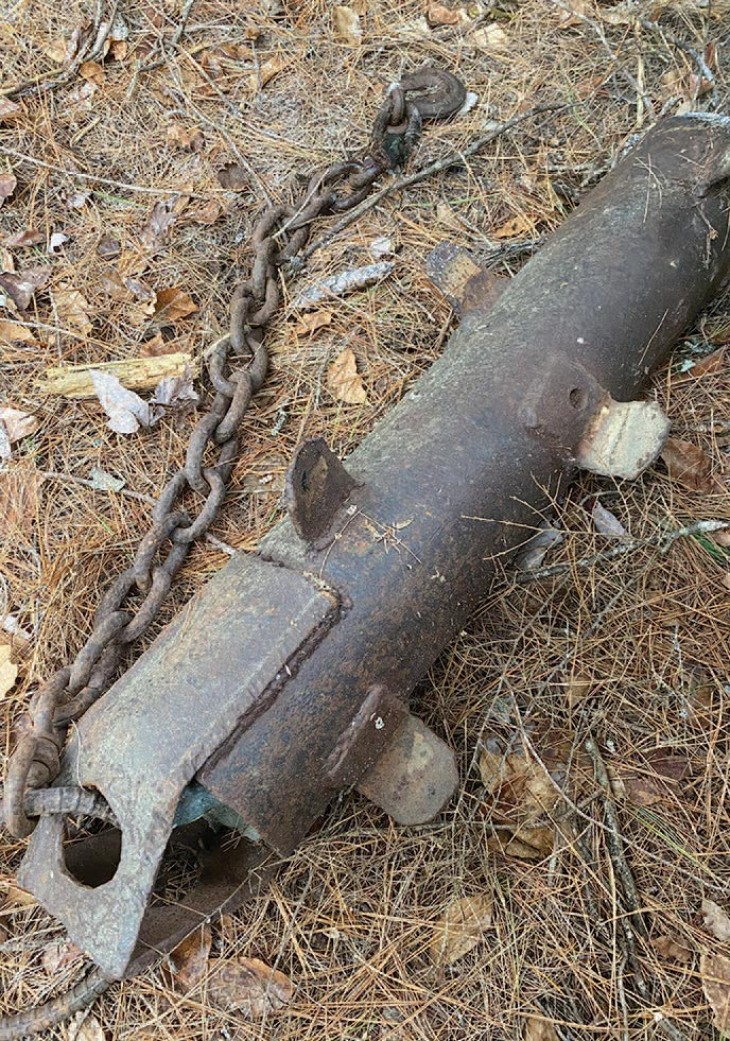Forestry often involves the blending of technical solutions with ecological knowledge. Such is the case with scarification of the forest floor, which is typically done in conjunction with a timber harvest in order to promote tree regeneration. Scarification is a technique for controlled soil disturbance, mixing leaf litter and seeds, and exposing the mineral soil below. For species with light seeds such as yellow birch and white pine, this mixed seedbed is essential. In addition to ensuring seeds’ contact with minerals needed for growth, scarification creates a moist microclimate that allows seeds to germinate before they dry out. This technique mimics and expands on nature’s tools for mixing soil, including wild turkeys that scratch through leaf litter in search of food, and uprooted trees that bring the mineral soil to the surface.
Here are some tried-and-true techniques for woodlot owners who wish to encourage regeneration on a small scale:
Fire Rake
The heavy tines of a fire rake are ideal for small-scale scarification. I use mostly a single-tree selection system in my woodlot and rake the newly created opening around the stump after harvesting to encourage new seedlings to germinate. A steel garden rake can also work for this purpose, but the tines tend to fill with small surface roots and leaf litter.
Drag Harrow
Another option is an agricultural drag harrow. This particular setup is made to be pulled behind a tractor or team of horses. This works well in areas with wide tree spacing, or in areas where abandoned fields are being converted back to forests.
Scarification Torpedo
This contraption consists of an 8-inch-diameter pipe, 4 feet long. It’s filled with concrete and has a series of fins welded in a spiral pattern. It can be pulled behind a single horse, small tractor, or ATV and allows for a less disturbed, more targeted scarification site. You can make a simpler version of this torpedo by leaving 3-inch branch stubs on a conifer log and dragging it behind a tractor or ATV.
Despite the effectiveness of intentional scarification for forest regeneration, a word of caution: Making a conscious decision to disturb the soil can invite erosion or regenerate species that you may not wish to encourage. If erosion or unwanted regeneration is a concern, it may be more appropriate to consider a winter harvest when the ground is frozen and to pursue regeneration through other methods. However, under the right conditions, intentional scarification can be magic.




